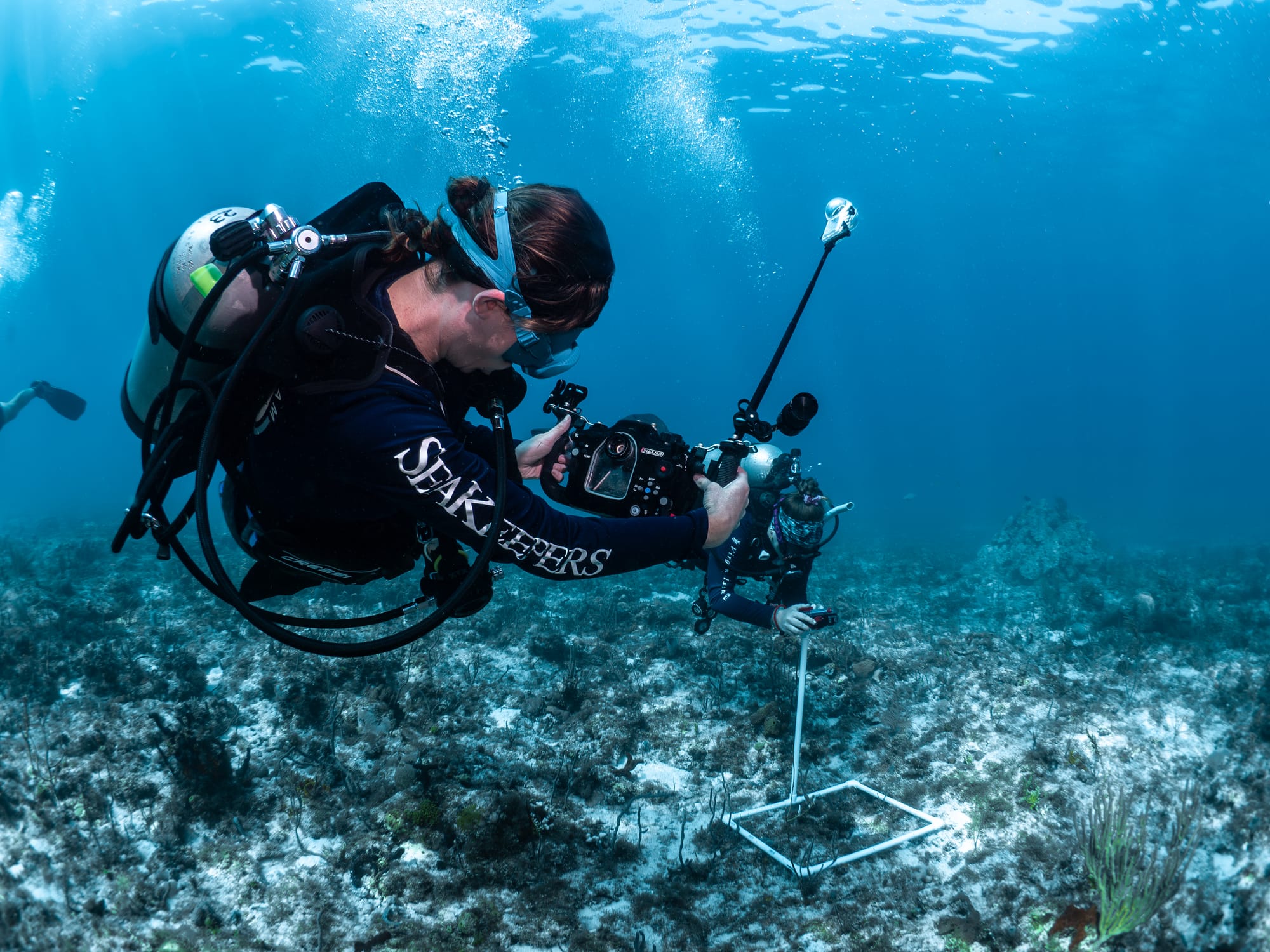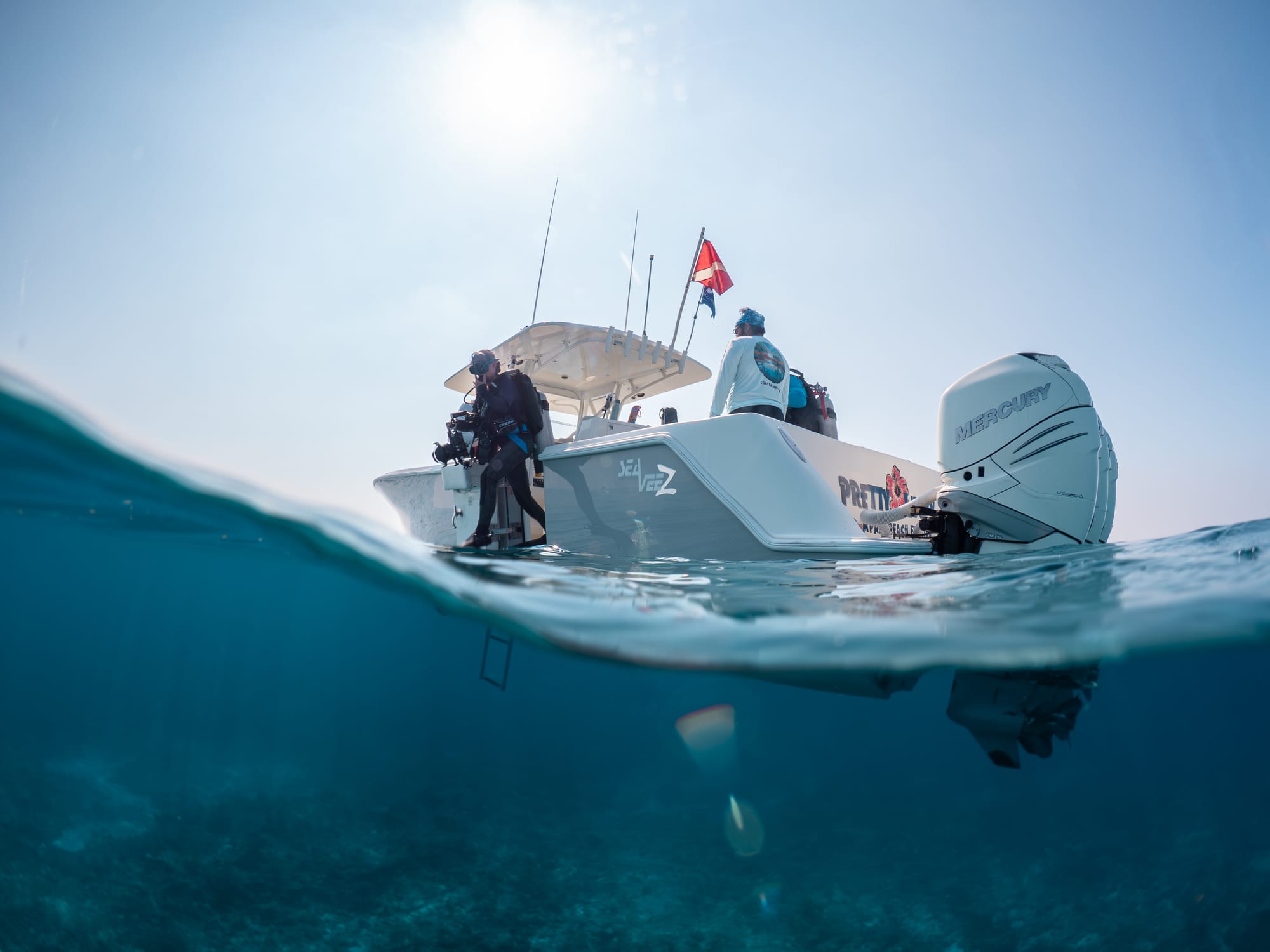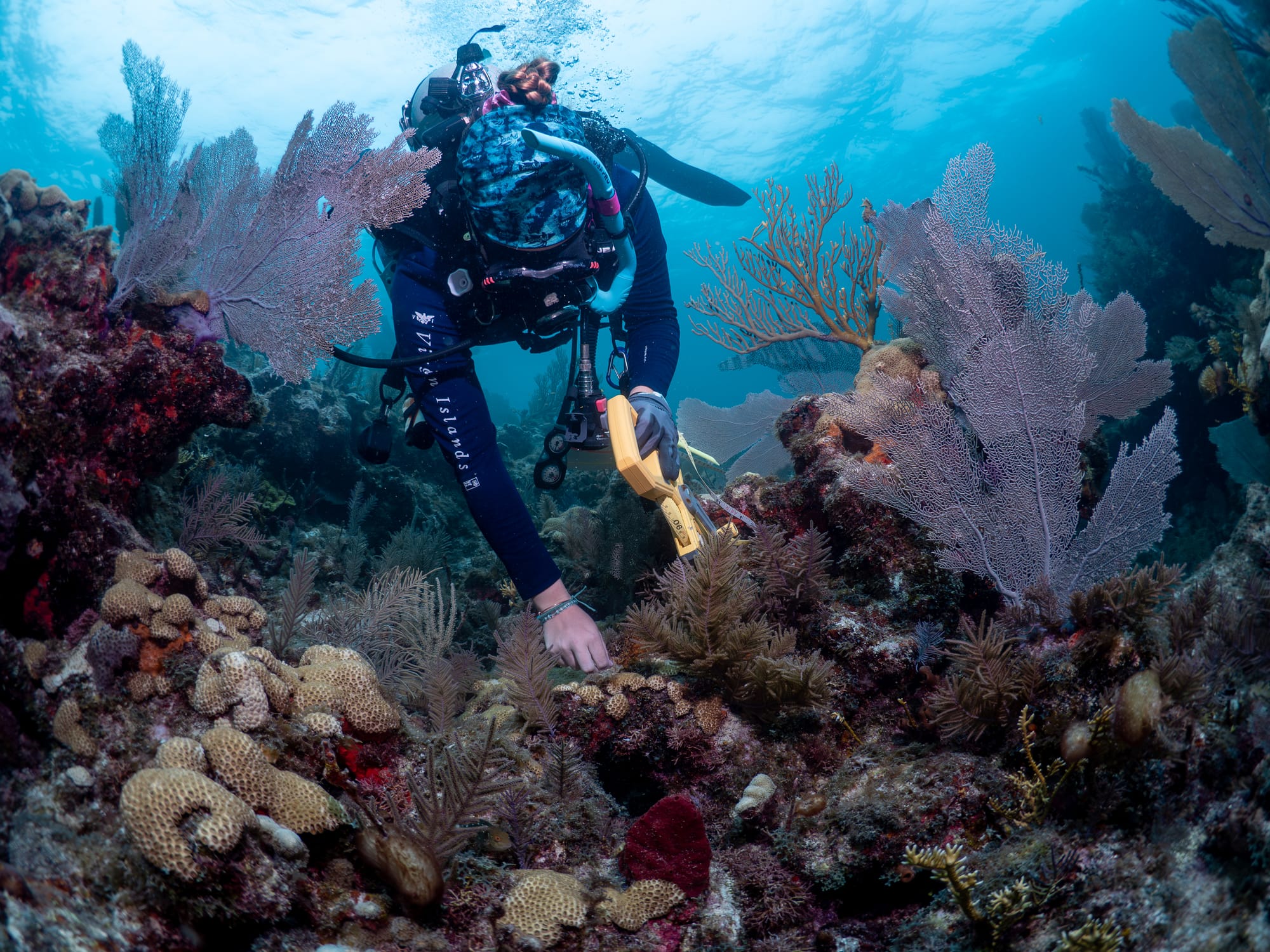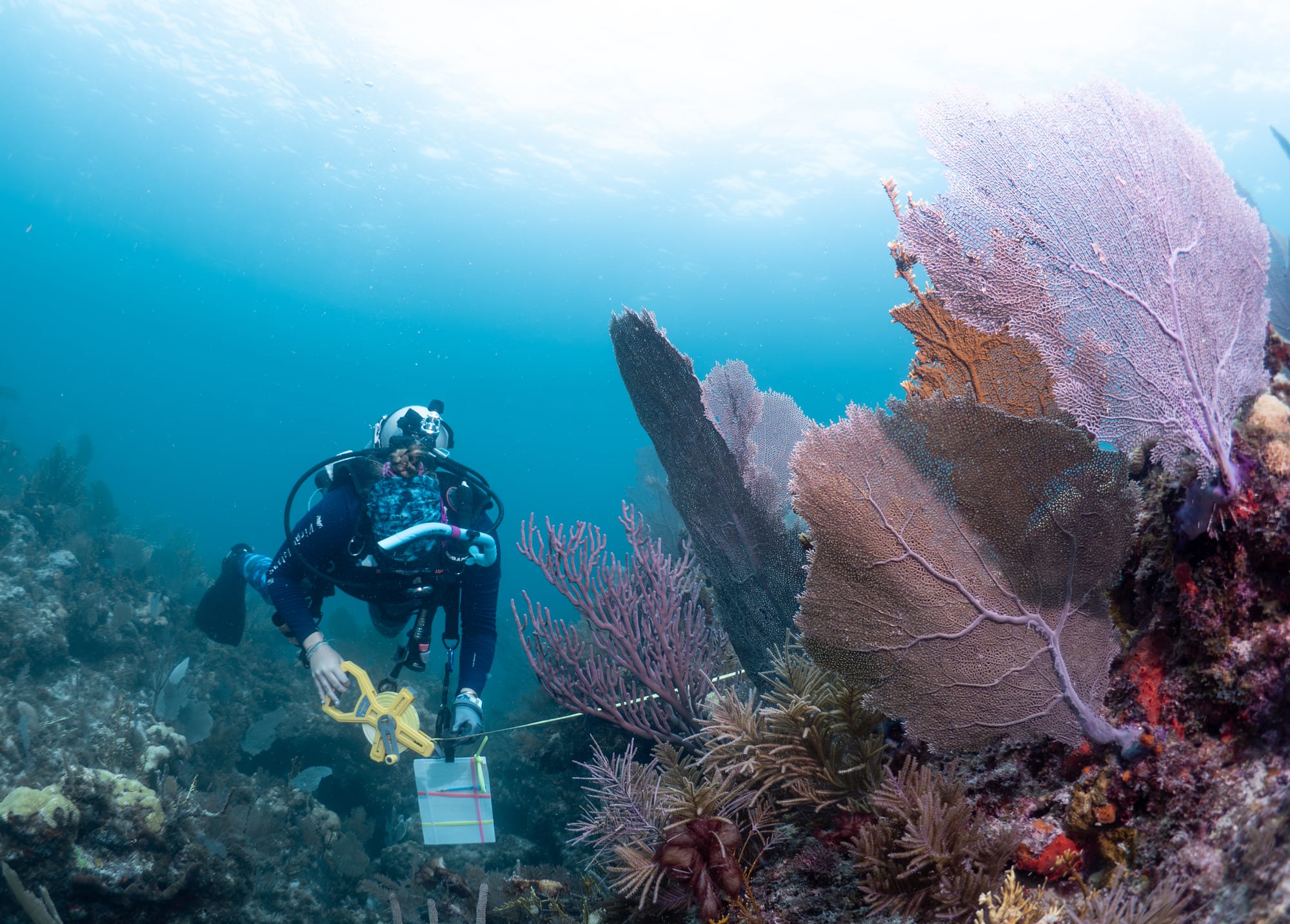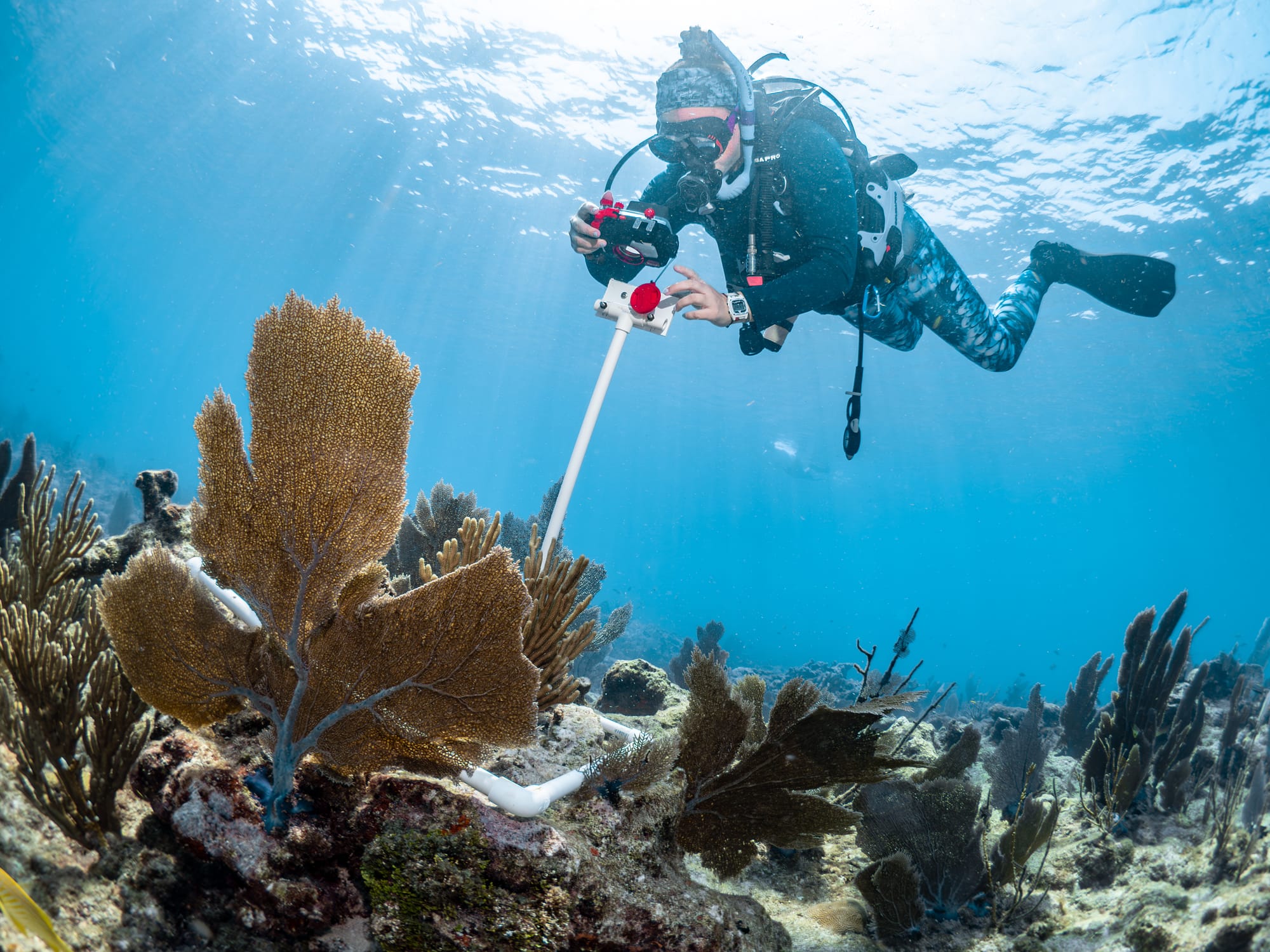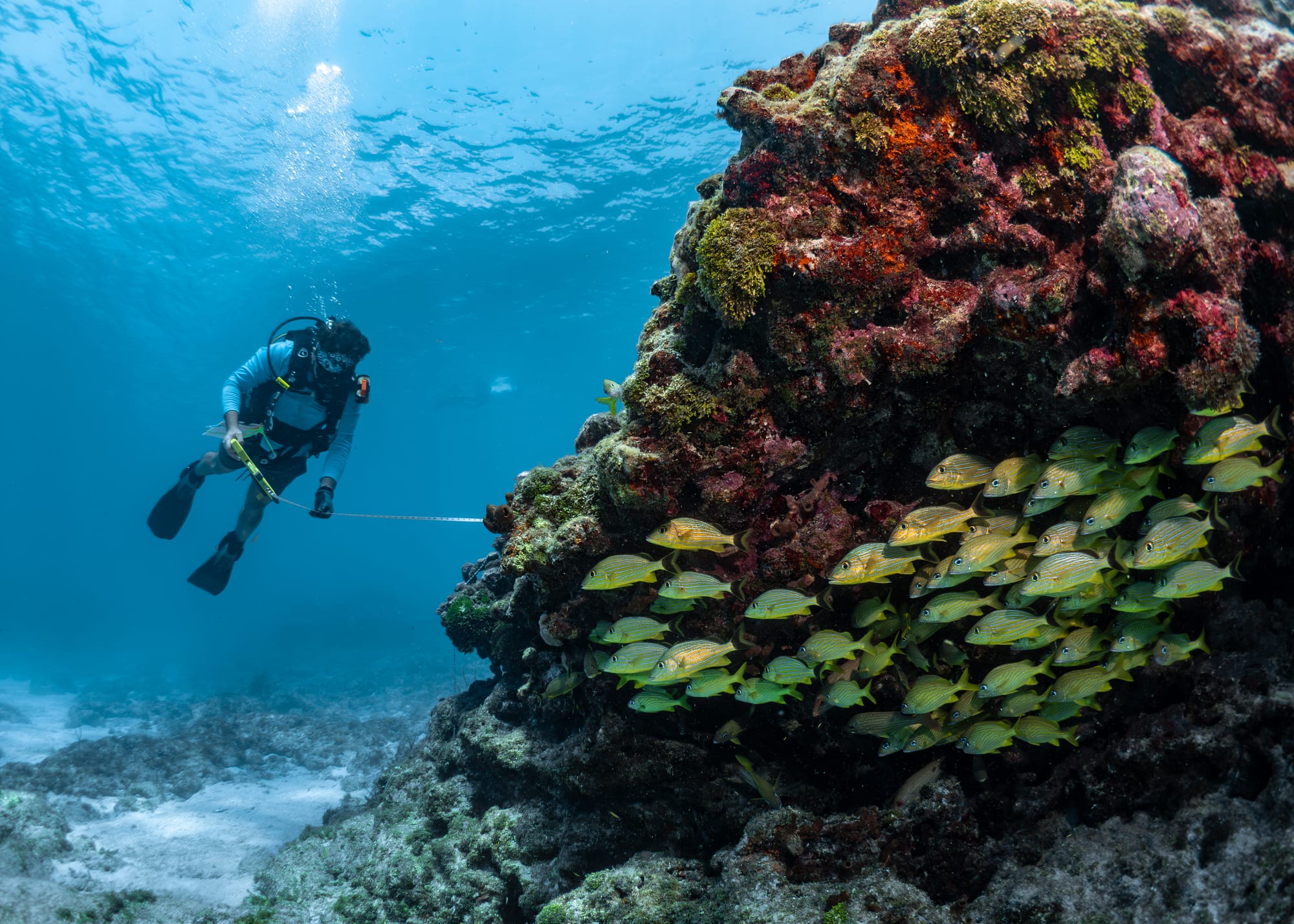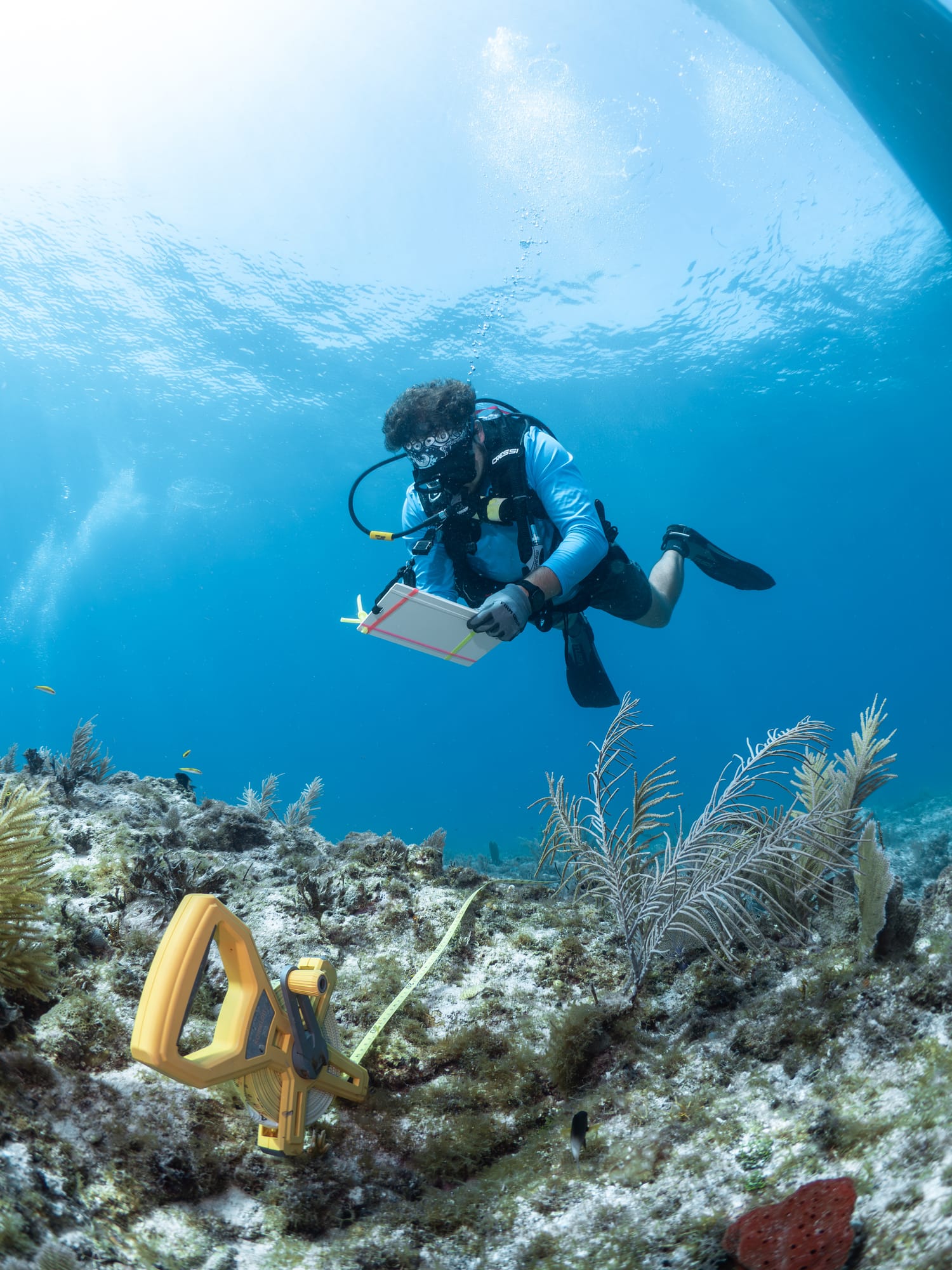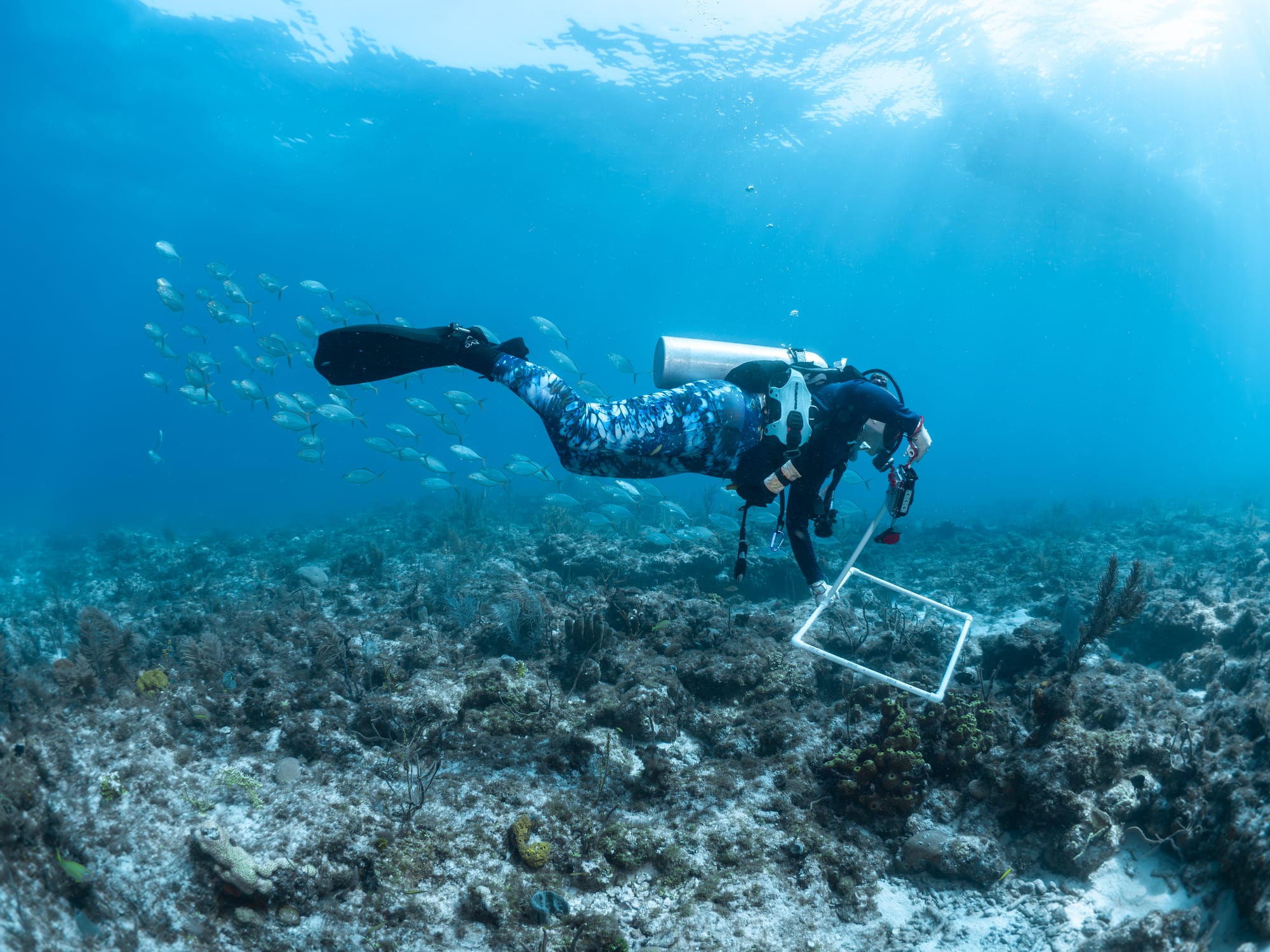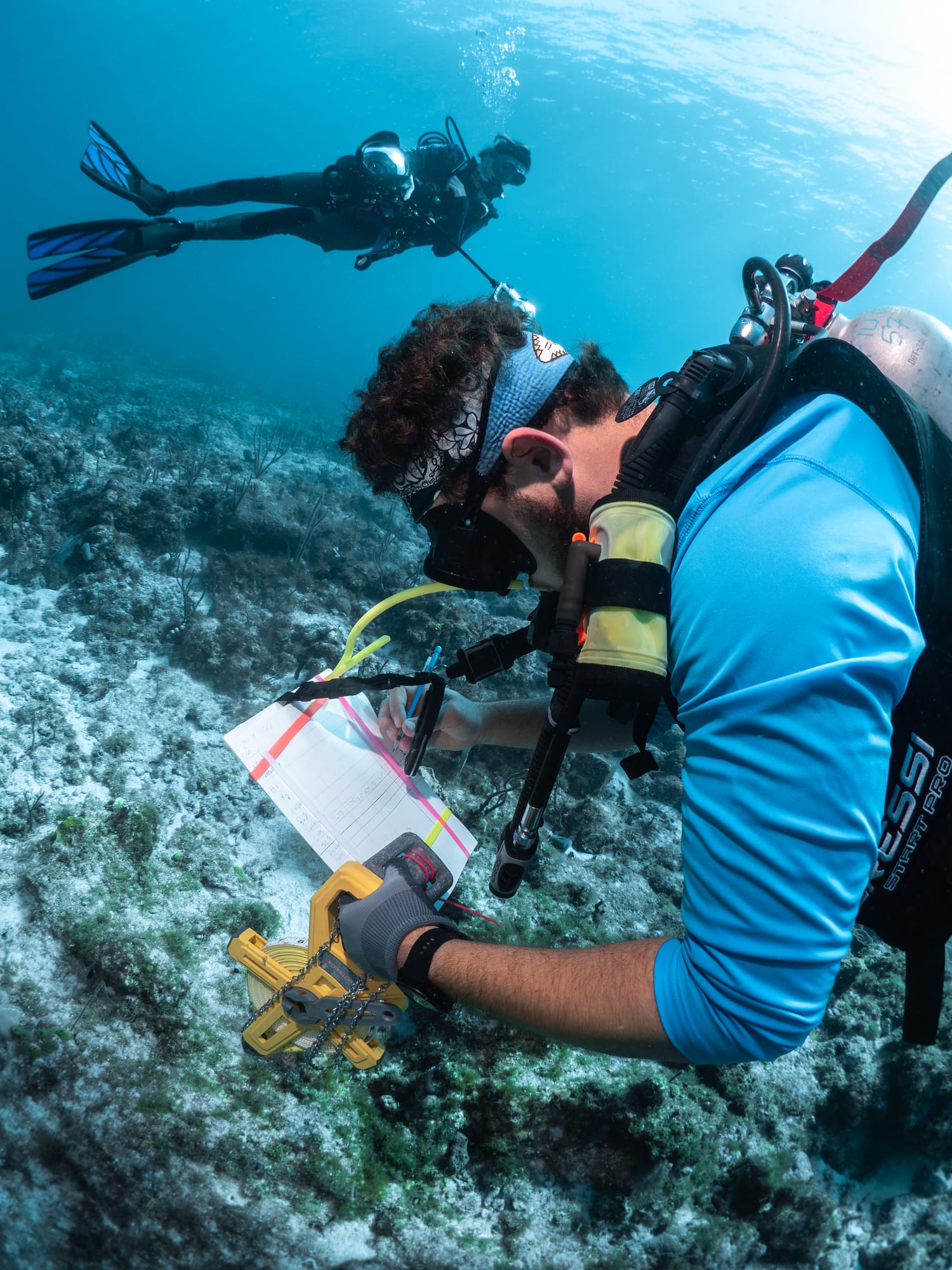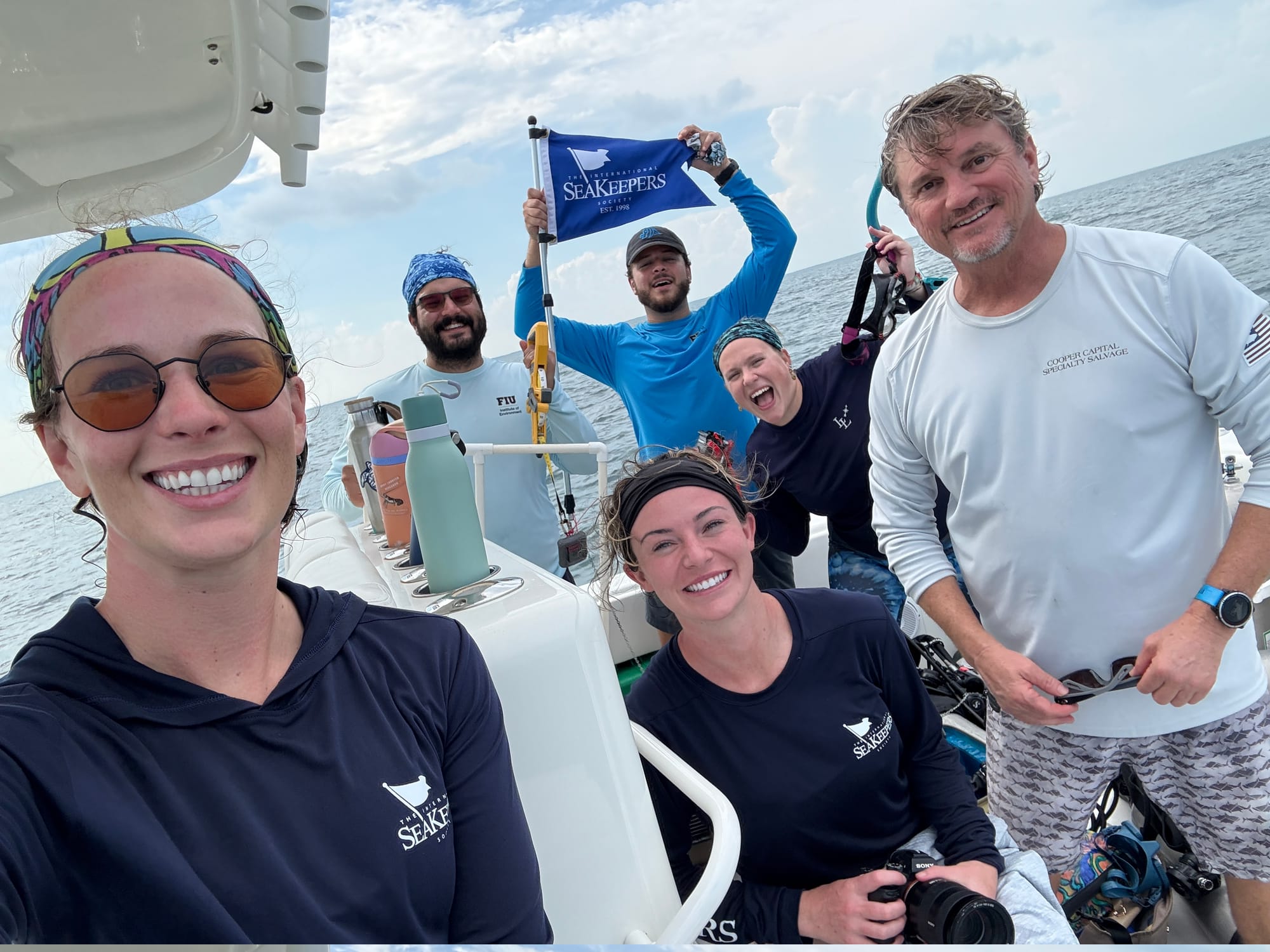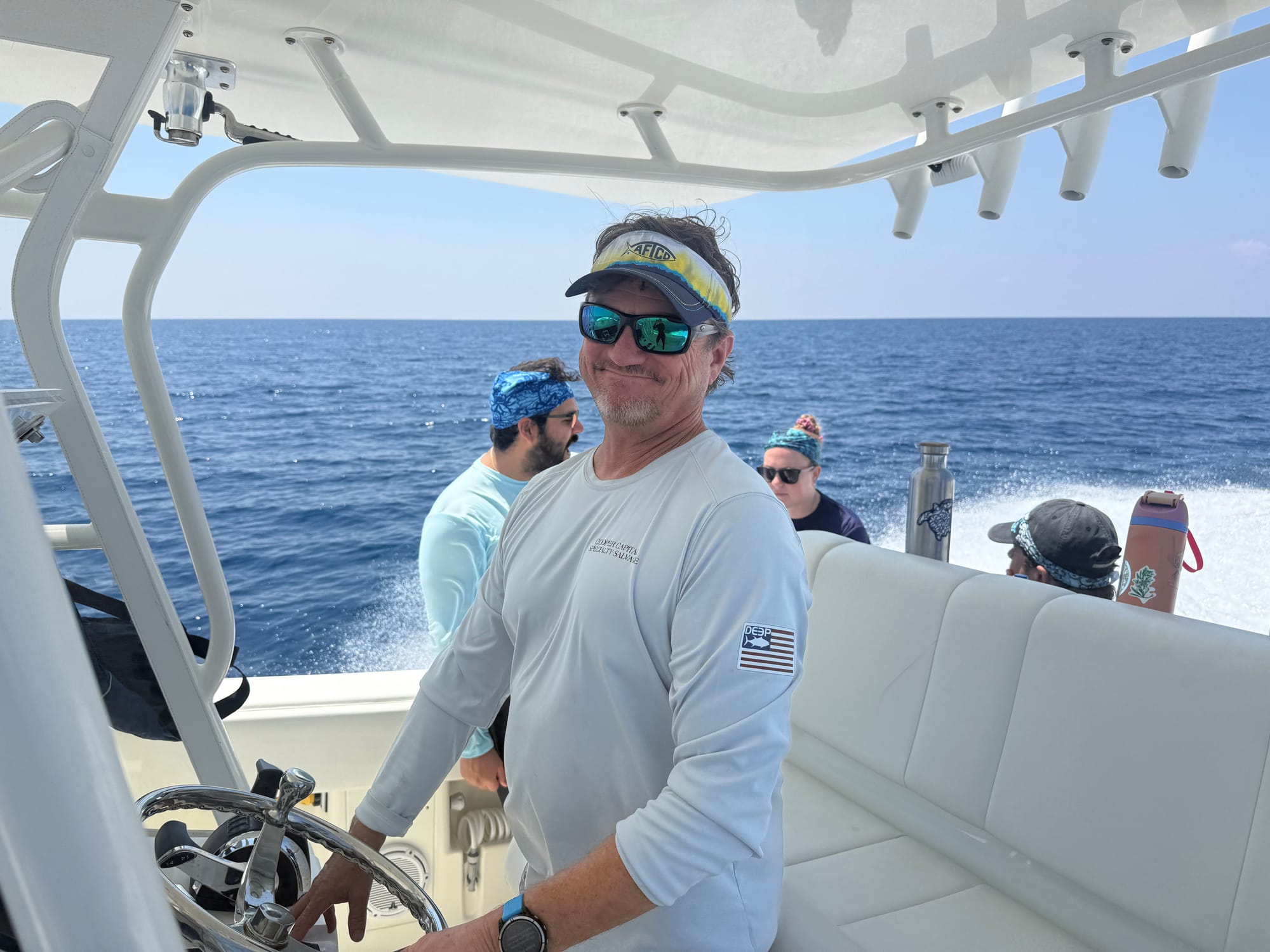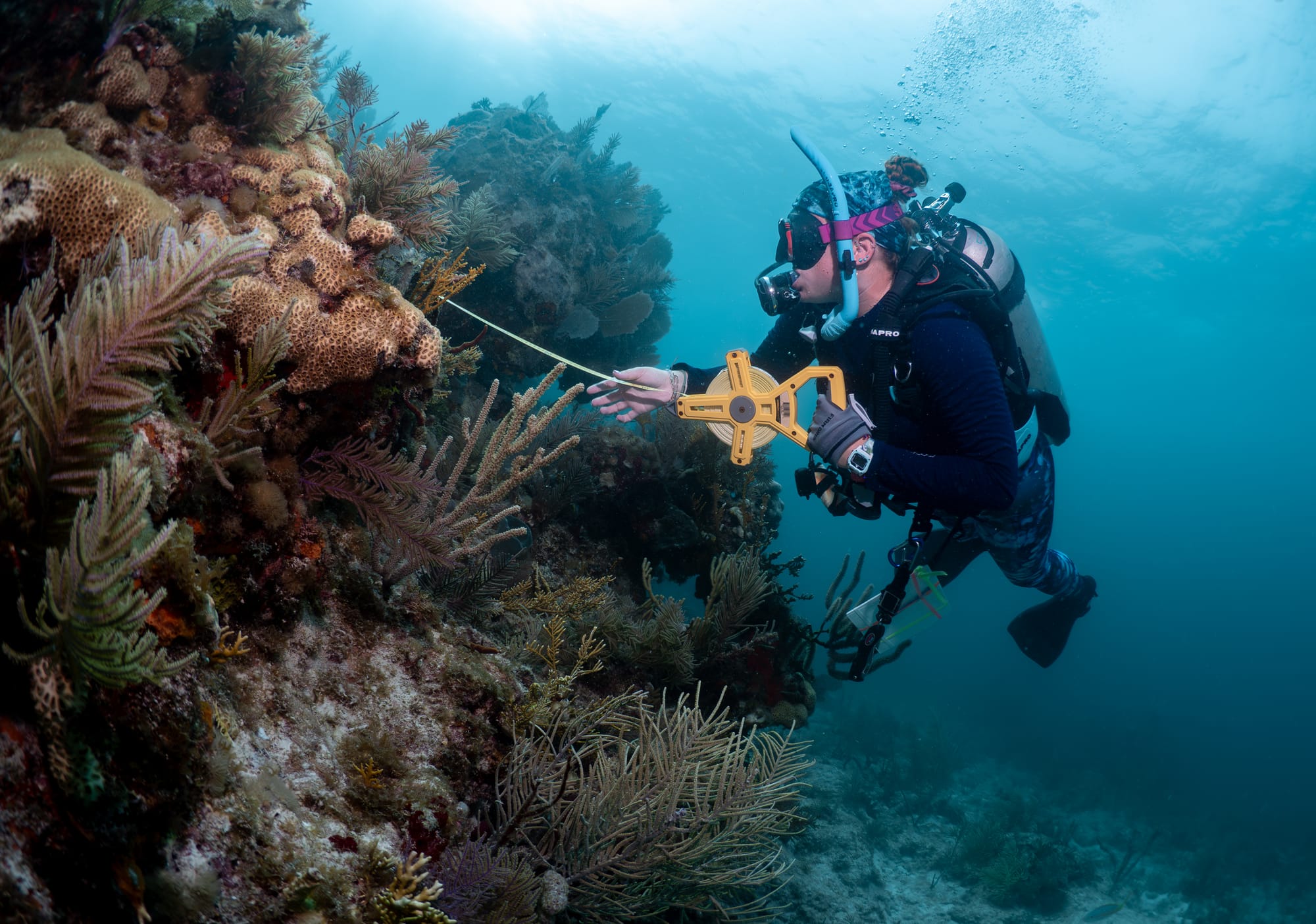- DISCOVERY Vessel Pretty Lucky
Sponges as Indicators of Reef Health in the Florida Keys
- August 22, 2025
- Upper Keys, Florida

Project Overview
Coral reefs are among the most diverse ecosystems on Earth, but in the Florida Keys they have experienced sharp declines in coral cover and structural complexity over the past five decades. Rising sea temperatures, coral disease, and other stressors continue to threaten reef resilience and the livelihoods of coastal communities.
Sponges play a vital yet understudied role in reef ecosystems. As powerful filter feeders and habitat builders, they influence water quality, nutrient cycling, and biodiversity. This project focuses on assessing sponge communities as potential biological indicators of reef health, helping scientists better understand how reef structure and complexity are changing in the face of ongoing stressors.
Application
Findings from this research will provide important insights into how sponges and reef structure interact with broader ecosystem health. By characterizing sponge diversity and abundance, and comparing it with coral cover and reef complexity, researchers can evaluate whether sponges can serve as effective indicators of reef resilience.
This expedition also supported Ph.D. candidate Mary Williams in completing critical fieldwork for her dissertation. Results from her study will be shared with Florida International University (FIU) and prepared for publication, contributing valuable data to the broader scientific community and informing future reef monitoring and restoration strategies.
Expedition Summary
On Friday, August 22, 2025, The International SeaKeepers Society supported researchers from FIU on an expedition in the Upper Keys aboard DISCOVERY Vessel Pretty Lucky. The research team surveyed 10 reef sites, combining two methods: photo quadrat surveys and chain-and-transect measurements.
Quadrat photo surveys allow researchers to document benthic communities in a standardized way, capturing detailed information on sponge abundance, coral cover, and algal presence across reef sites. The chain-and-transect method is used to measure rugosity, or reef complexity, by laying a small chain along the contours of the reef surface and comparing that measurement to a straight-line distance. This provides an index of the reef’s three-dimensional structure, which is a critical factor for biodiversity, since more complex reefs support greater fish populations and healthier ecosystems.
By combining these methods, the team is developing a comprehensive picture of sponge diversity and reef structure. These data will help determine whether sponges can serve as reliable bioindicators of reef health, information that is especially important in the Florida Keys where coral decline has dramatically altered reef ecosystems.
Location
Upper Keys, Florida
Duration of Project
Mary Williams began this work in 2023, and the expedition with SeaKeepers marked the final day of fieldwork. Her findings will be shared through Florida International University and are expected to be published in summer 2026.
Research Team
- Brandon Sosa (PhD Candidate, FIU)
- Miguel Lorenzo (FIU)
- Rosie Moore, MSc, SeaKeepers – Videography
- Aubri Keith, MSc, SeaKeepers – Photography




